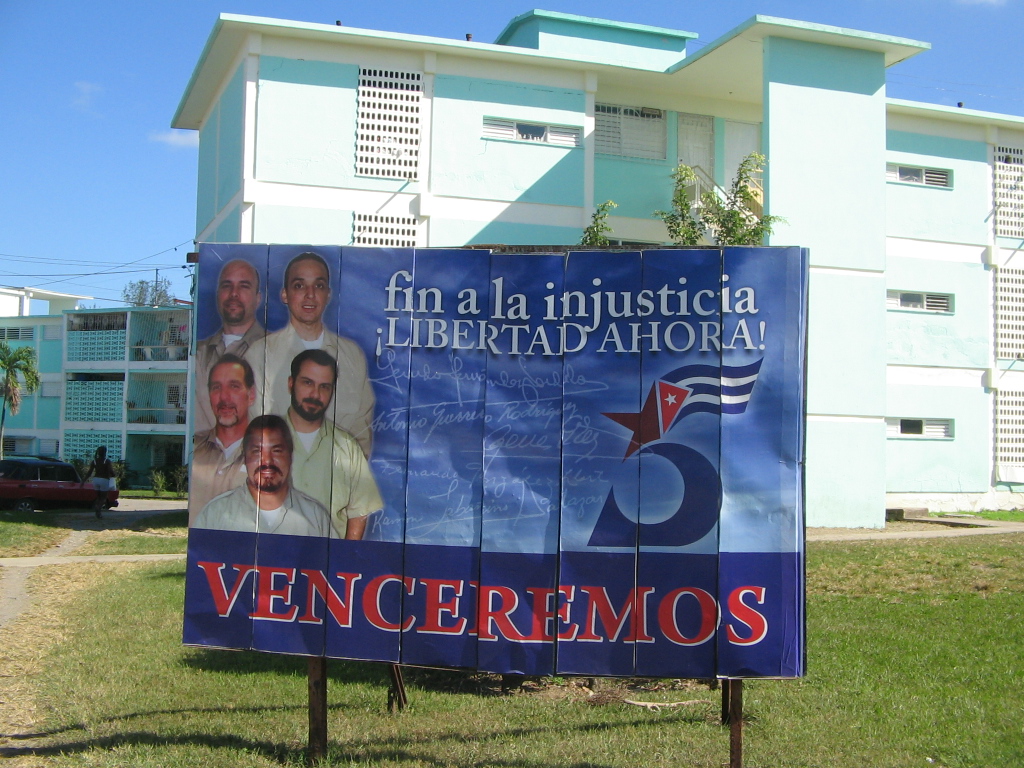Cuban Five
 The Cuban Five, also known as the Miami Five, are five Cuban intelligence officers (Gerardo Hernández, Antonio Guerrero, Ramón Labañino, Fernando González, and René González) who were arrested in September 1998 and later convicted in Miami of conspiracy to commit espionage, conspiracy to commit murder, acting as an agent of a foreign government, and other illegal activities in the United States. The Five were in the United States to observe and infiltrate the Cuban-American groups Alpha 66, the F4 Commandos, the Cuban American National Foundation, and Brothers to the Rescue. They were part of () composed of at least 27 Cuban spies.
The Cuban Five, also known as the Miami Five, are five Cuban intelligence officers (Gerardo Hernández, Antonio Guerrero, Ramón Labañino, Fernando González, and René González) who were arrested in September 1998 and later convicted in Miami of conspiracy to commit espionage, conspiracy to commit murder, acting as an agent of a foreign government, and other illegal activities in the United States. The Five were in the United States to observe and infiltrate the Cuban-American groups Alpha 66, the F4 Commandos, the Cuban American National Foundation, and Brothers to the Rescue. They were part of () composed of at least 27 Cuban spies.The Cuban government acknowledged that the five were intelligence agents in 2001, after denying it for three years. It said they were spying on Miami's Cuban exile community, not the U.S. government. Cuba says that the men were sent to South Florida in the wake of several terrorist bombings in Havana organized by anti-communist terrorist Luis Posada Carriles, a former Central Intelligence Agency operative.
The Five appealed their convictions, and concerns about the fairness of their trial received international attention. A three-judge panel of the Eleventh Circuit Court of Appeals in Atlanta overturned their convictions in 2005, citing the "prejudices" of Miami's anti-Castro Cubans, but the full court later denied the five's bid for a new trial and reinstated the original convictions. In June 2009 the U.S. Supreme Court declined to review the case. In Cuba, the Five are viewed as national heroes and portrayed as having sacrificed their liberty in the defense of their country.
René González was released from prison on October 7, 2011, having completed thirteen years of his sentence, with three years of probation in the U.S. remaining. He was allowed to return to Cuba for his father's funeral on April 22, 2013, and a federal judge allowed him to stay there provided that he renounce his United States citizenship. Fernando González was released on February 27, 2014. The remaining members were released on December 17, 2014, in a prisoner swap with Cuba for an American intelligence officer, identified by a senior American as Rolando Sarraff Trujillo. The exchange of prisoners coincided with Cuba's release of American contractor Alan Phillip Gross, although the governments characterized the release of Gross as being unrelated to the prisoner exchange. Some observers saw these events as a first step in the easing of political relations between the United States and Cuba, known as the Cuban Thaw. Provided by Wikipedia
1
Fuente: Universidad Interamericana Panamá
Tipo de Material: Thesis
Book
2
Fuente: Procuraduria de la Administración
Tipo de Material: Book
3
Fuente: Universidad de Panamá
Tipo de Material: Book


